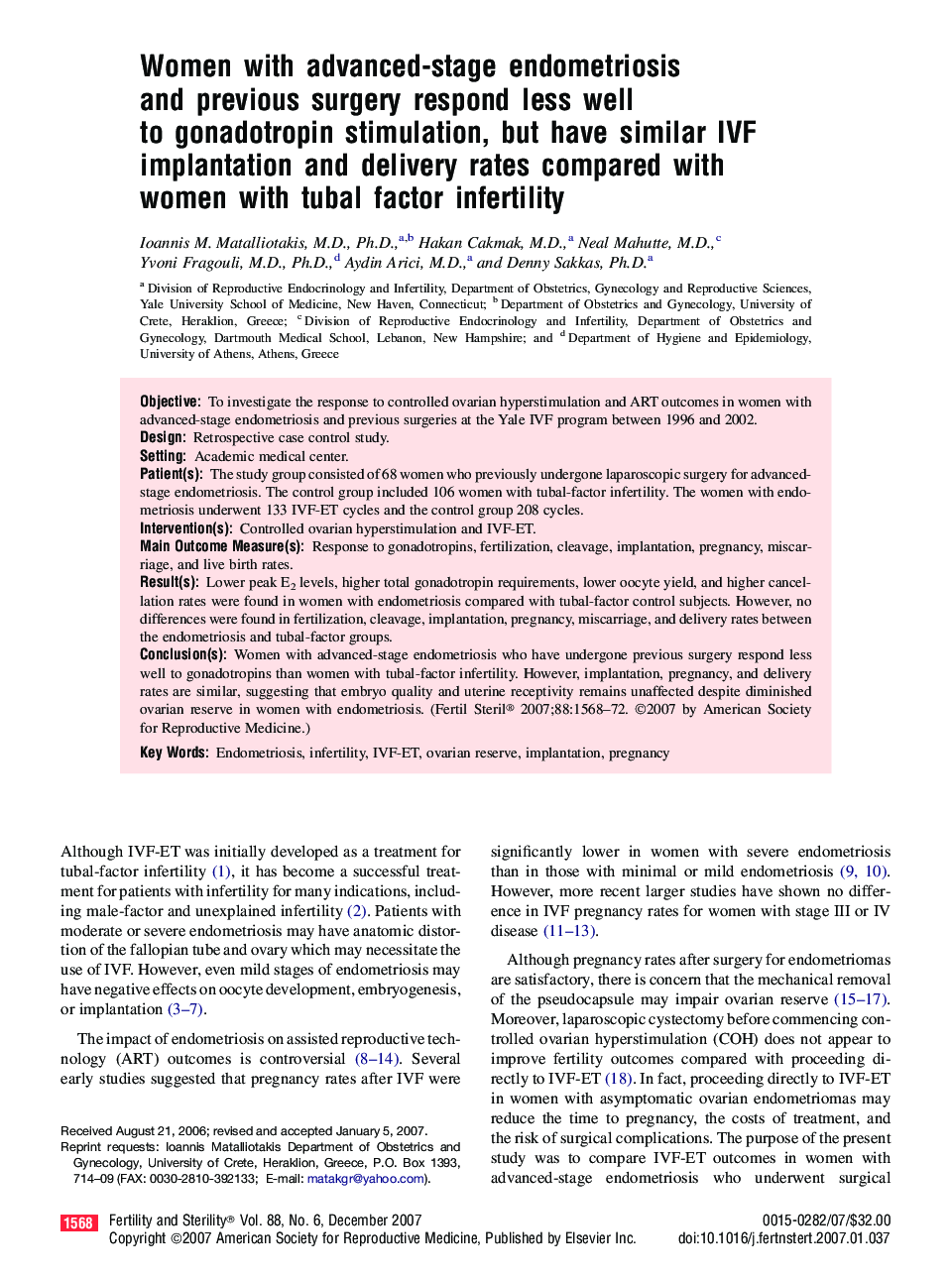| Article ID | Journal | Published Year | Pages | File Type |
|---|---|---|---|---|
| 3935239 | Fertility and Sterility | 2007 | 5 Pages |
ObjectiveTo investigate the response to controlled ovarian hyperstimulation and ART outcomes in women with advanced-stage endometriosis and previous surgeries at the Yale IVF program between 1996 and 2002.DesignRetrospective case control study.SettingAcademic medical center.Patient(s)The study group consisted of 68 women who previously undergone laparoscopic surgery for advanced-stage endometriosis. The control group included 106 women with tubal-factor infertility. The women with endometriosis underwent 133 IVF-ET cycles and the control group 208 cycles.Intervention(s)Controlled ovarian hyperstimulation and IVF-ET.Main Outcome Measure(s)Response to gonadotropins, fertilization, cleavage, implantation, pregnancy, miscarriage, and live birth rates.Result(s)Lower peak E2 levels, higher total gonadotropin requirements, lower oocyte yield, and higher cancellation rates were found in women with endometriosis compared with tubal-factor control subjects. However, no differences were found in fertilization, cleavage, implantation, pregnancy, miscarriage, and delivery rates between the endometriosis and tubal-factor groups.Conclusion(s)Women with advanced-stage endometriosis who have undergone previous surgery respond less well to gonadotropins than women with tubal-factor infertility. However, implantation, pregnancy, and delivery rates are similar, suggesting that embryo quality and uterine receptivity remains unaffected despite diminished ovarian reserve in women with endometriosis.
